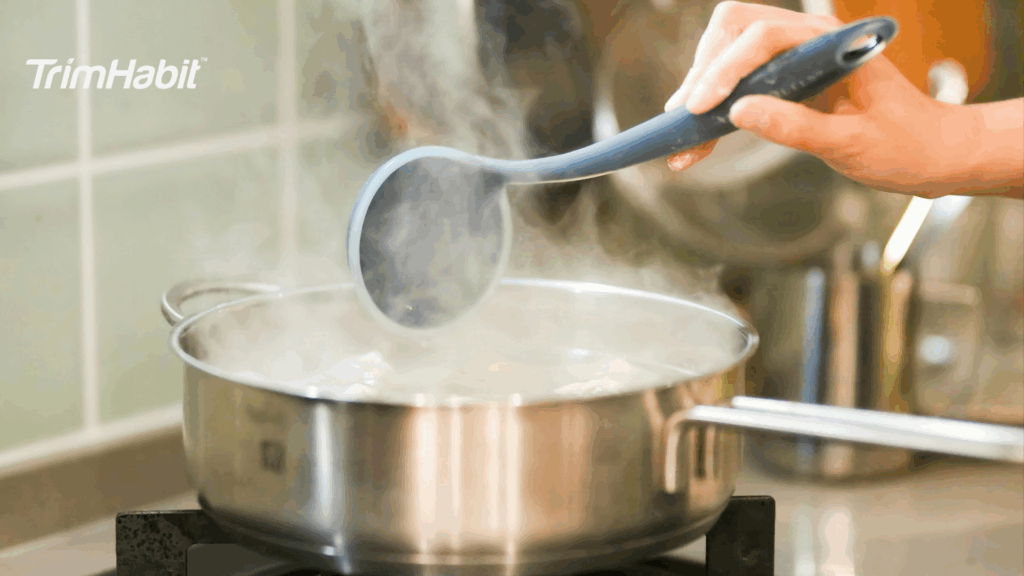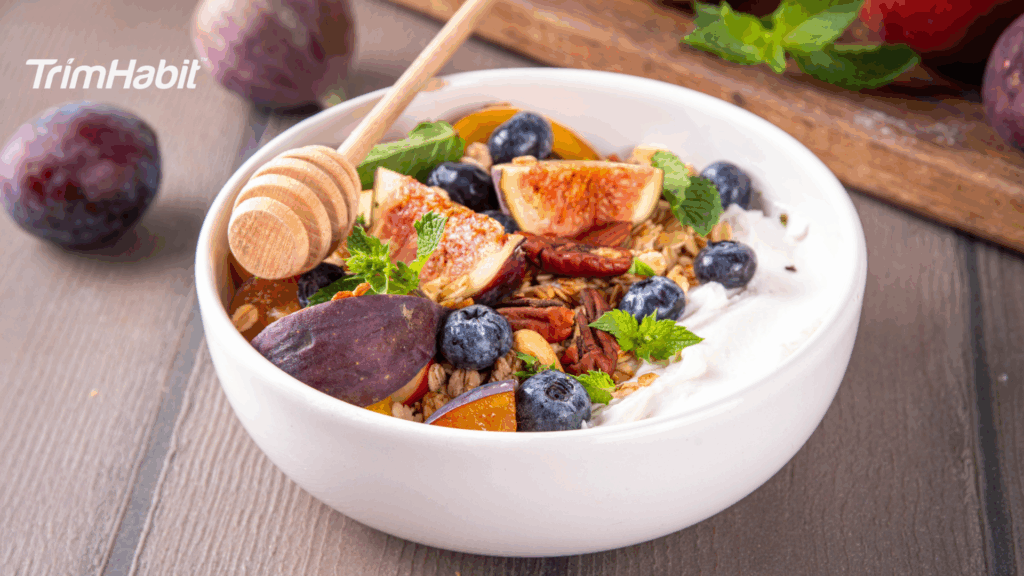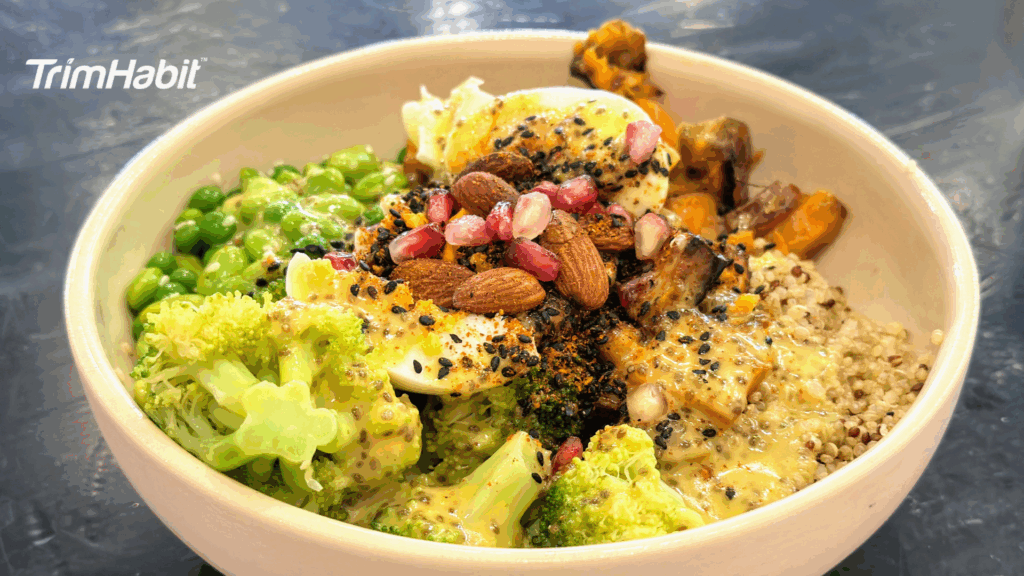In the quest for a healthier lifestyle and sustainable weight loss, understanding the profound impact of inflammation on our bodies is crucial. Chronic inflammation has been associated with a myriad of health issues, emphasizing its pivotal role in our overall well-being. Designing meal plans with a focus on reducing inflammation, particularly during dinner, can be a transformative approach for individuals committed to reaching their weight loss goals.
As we delve into this guide outlining the best low-inflammation dinner foods for weight loss, it’s essential to gain a deeper understanding of how inflammation affects our bodies.
Understanding Inflammation
Inflammation is the body’s natural response to injury, infection, or harmful stimuli. It is a complex biological process involving the immune system’s activation to protect and repair tissues. When the body detects an external threat, the immune system and cells release chemicals that increase blood flow to the affected area, causing redness, swelling, and warmth1.
While acute inflammation is a crucial part of the healing process, chronic inflammation, characterized by persistent low-level inflammation, can harm health. Chronic inflammation is associated with various diseases, including cardiovascular issues, autoimmune disorders, and metabolic conditions2.
Relationship Between Chronic Inflammation and Weight Gain
Chronic inflammation has been identified as a contributing factor to weight gain and obesity, and this association is intricate, involving various underlying mechanisms. A pivotal aspect of this connection lies in the influence of inflammation on insulin resistance. The sustained presence of inflammation can disturb the usual operations of insulin, a hormone essential for maintaining blood sugar levels. Consequently, insulin resistance may emerge, leading to heightened fat storage, especially in the abdominal region. Additionally, inflammatory signals can affect hormones that control hunger and satiety, potentially leading to overeating3.
Excess fat tissue can also contribute to inflammation, creating a cyclical relationship between inflammation and weight gain. Addressing chronic inflammation through dietary and lifestyle changes is often considered a crucial component of effective weight management strategies4.
Potential Benefits Of Low-Inflammation Dinner Foods For Weight Loss
Choosing low-inflammation foods for dinner may offer several potential benefits for weight loss. Chronic inflammation in the body has been linked to various health issues, including obesity and metabolic dysfunction5. By incorporating anti-inflammatory foods into your evening meals, you may experience the following benefits:
Improved Metabolism
Chronic inflammation can disrupt hormonal balance and interfere with the body’s ability to regulate metabolism. Consuming low-inflammation foods may help support a healthy metabolic rate, potentially aiding in weight management6.
Reduced Cravings
Some inflammatory foods can trigger cravings and overeating. Choosing anti-inflammatory options for dinner may help stabilize blood sugar levels and reduce cravings, making it easier to stick to a balanced and portion-controlled diet7.
Better Insulin Sensitivity
Chronic inflammation can impair insulin sensitivity, crucial for proper blood sugar regulation. A diet rich in anti-inflammatory foods may support better insulin function, potentially reducing the risk of insulin resistance and promoting weight loss8.
Enhanced Digestive Health
Many anti-inflammatory foods are high in fiber, vitamins, and minerals, which can contribute to a healthy digestive system. Improved gut health is associated with better nutrient absorption and may help manage weight9.
Increased Satiety
Protein-rich foods and those with healthy fats, often found in low-inflammation options, can increase feelings of fullness and satiety. This can reduce overall calorie intake and may support weight loss efforts10.
Balanced Hormones
Chronic inflammation can disrupt hormonal balance, affecting hormones related to hunger and fullness. Choosing foods with anti-inflammatory properties may help maintain hormonal balance and support a more regulated appetite11.
Enhanced Sleep Quality
Poor sleep is linked to inflammation and weight gain. Certain anti-inflammatory foods, such as those rich in tryptophan and magnesium, may promote better sleep quality, contributing to overall well-being and weight management12.
Reduced Water Retention
Inflammatory foods can contribute to water retention, leading to temporary weight gain. Opting for low-inflammation foods may help alleviate bloating and reduce water retention, providing a more accurate reflection of your body weight13.
Criteria For Low Inflammation Dinner Foods
Choosing low-inflammation dinner foods involves focusing on whole, nutrient-dense options that have been shown to have anti-inflammatory properties. Here are some criteria to consider when selecting foods for a dinner that may help reduce inflammation:
Omega-3 Fatty Acids
Include foods rich in omega-3 fatty acids, such as fatty fish (salmon, mackerel, sardines), chia seeds, flaxseeds, and walnuts. Omega-3s have anti-inflammatory effects on the body14.
Colorful Vegetables
Opt for a variety of colorful vegetables, particularly those high in antioxidants. Examples include leafy greens (kale, spinach), broccoli, Brussels sprouts, bell peppers, sweet potatoes, and potatoes. These vegetables contain vitamins, minerals, and phytonutrients that combat inflammation15.
Berries
Berries like blueberries, strawberries, and raspberries are rich in antioxidants and associated with anti-inflammatory effects16.
Turmeric and Ginger
These spices contain curcumin (in turmeric) and gingerol (in ginger), which have potent anti-inflammatory properties. Consider incorporating turmeric into dishes or drinking ginger tea17.
Healthy Fats
Include sources of healthy fats like avocados, olive oil, and nuts. These fats have anti-inflammatory effects and can help balance hormones18.
Lean Proteins
Choose lean protein sources like poultry, fish, legumes, and tofu. Adequate protein intake supports muscle health and helps control appetite19.
Probiotic Foods
Foods that promote a healthy gut microbiome can have anti-inflammatory effects. Include probiotic-rich options like yogurt, kefir, sauerkraut, and kimchi20.
Minimize Added Sugars and Processed Foods
Processed foods and those high in added sugars can contribute to inflammation. Choose whole, unprocessed foods whenever possible and limit sugary snacks and desserts21.
Herbs and Spices
Use herbs and spices like basil, oregano, rosemary, and cinnamon to add flavor and anti-inflammatory compounds to your meals22.
Hydration
Drink plenty of water throughout the day to stay hydrated. Proper hydration supports overall health and can help reduce inflammation23.
Limit Dairy and Red Meat
Some individuals may experience inflammation from certain dairy products and red meat. Consider reducing or moderating the intake of these foods, especially if you suspect sensitivity24.
Best Low-Inflammation Dinner Foods For Weight Loss
In helping you design a dinner menu that not only aligns with your weight loss goals but also contributes to your health, we present a carefully curated list of the best low-inflammation foods.
Tofu Fried Rice
Soy foods, such as tofu, are abundant in plant compounds called isoflavones, recognized for their anti-inflammatory properties. This is why tofu stands out as one of the healthiest food choices.
Additionally, in this dish, ingredients like olive and coconut oil, ground turmeric, and yogurt further contribute to combating inflammation.
Sun-dried tomato Butter Salmon and Broccolini
The sun-dried tomatoes and red peppers utilized in crafting the delightful compound butter are an outstanding source of the antioxidant lycopene. Meanwhile, broccolini is rich in sulfur-containing compounds, effectively contributing to the prevention of inflammation and cardiovascular disease.
Salmon Tacos With Grapefruit Salsa
These fish tacos deviate from the usual, yet they are vibrant, flavorful, and loaded with ingredients known for their anti-inflammatory properties. Alongside the fatty salmon, you’ll discover avocado chunks, vitamin C-rich grapefruit, and fresh cilantro, boasting its abundant antioxidants.
Strawberry-Chia Breakfast Pudding
Chia seeds boast a myriad of health benefits. Beyond providing ample fiber and calcium, these tiny powerhouses are potent warriors against inflammation. Combine them with strawberries, fresh berries, and yogurt, and you have a fantastic choice for a breakfast or brunch promoting well-being.
Berry Baked Oatmeal
This breakfast or brunch option is an excellent choice, brimming with ingredients known for their anti-inflammatory properties. The dish features a medley of berries—such as blueberries, strawberries, blackberries, and raspberries—along with wholesome rolled oats. Adding vitamin E-rich sliced almonds as a topping with plain yogurt is the anti-inflammatory finishing touch.
Spring Green Salad With Avocado
Given the abundance of green foods, it’s no wonder this salad is on the list. Key ingredients such as avocado, fresh mint, and edamame possess anti-inflammatory properties. Even the dressing contributes to the fight against inflammation, featuring nutrient-rich Greek yogurt and anchovies, an excellent source of omega-3 fatty acids known for their potent inflammation-reducing effects.
Savory Oatmeal With Spinach and Poached Eggs
Fight inflammation with this recipe that uses anti-inflammatory oatmeal in a savory way. Eggs also have compounds with anti-inflammatory properties, such as omega-3 fatty acids, while spinach is rich in antioxidants, including lutein, beta-carotene, and vitamin C.
Farro and Squash Salad
Anti-inflammatory farro collaborates with lutein-rich zucchini and almonds, both recognized for their inflammation-fighting properties. Even the garnish, basil, contributes essential oils like eugenol, linalool, and citronellol, which have been proven to combat inflammation.
Shawarma-Seasoned Cauliflower and Chickpea Pitas
Cauliflower serves as an excellent reservoir of antioxidants, housing anti-inflammatory compounds. This dish’s typically neutral-flavored cauliflower is infused with a vibrant and tasteful spice blend featuring turmeric, cinnamon, cardamom, cloves, and garlic. Incorporating chickpeas and yogurt completes the ensemble, crafting a timeless anti-inflammatory meal.
Yellow Squash Farro Bowl
While grains may sometimes receive negative attention, not all are alike. The farro featured in this nutrient-packed recipe stands out for its abundance of fiber and anti-inflammatory antioxidants. If you need more reasons to prepare this grain bowl, it’s brimming with inflammation-fighting ingredients like avocado and chickpeas, and it comes together in just 35 minutes.
Tips For Incorporating Low-Inflammation Foods Into Dinner
Incorporating low-inflammation foods into your meal plan and your dinner routine can be delicious and beneficial for your health. Here are some tips to help you quickly include these foods in your meals:
- Start with a Colorful Salad: Begin your meal with a salad loaded with leafy greens like spinach or kale, topped with colorful vegetables, nuts, and seeds. This adds antioxidants and fiber to your diet and helps fill you with healthy ingredients.
- Choose Lean Proteins: Opt for lean proteins like grilled or baked fish (especially salmon or mackerel), skinless poultry, or plant-based proteins like tofu or tempeh. These protein sources are less likely to promote inflammation compared to red and processed meats.
- Incorporate Whole Grains: Replace refined grains with whole grains like quinoa, brown rice, barley, or whole wheat. These grains are higher in fiber and nutrients and have a lower inflammatory impact.
- Cook with Healthy Fats: Use olive or avocado oil instead of butter or other saturated fats for cooking. These oils are not only heart-healthy but also have anti-inflammatory properties.
- Spice It Up: Add turmeric, ginger, garlic, and black pepper to your meals. These spices are known for their anti-inflammatory effects and can add great flavor to your dishes.
- Vegetable-Focused Dishes: Make vegetables the star of your meal. Stir-fries, roasted vegetable medleys, or vegetable-based soups and stews are great ways to pack in various anti-inflammatory veggies.
- Healthy Snacking: Instead of processed snacks, opt for nuts, seeds, or berries as a pre-dinner snack. These curb hunger and contribute to your intake of anti-inflammatory nutrients.
- Hydration with a Twist: Drink plenty of water throughout the day. Add slices of lemon, cucumber, or berries to your water for added flavor and nutrients.
- Experiment with Herbs: Fresh herbs add flavor without extra calories and have anti-inflammatory properties—like basil, thyme, and oregano.
- Plan Your Meals: Plan your weekly meals to ensure you include various low-inflammation foods. This helps with grocery shopping and avoids the last-minute rush of deciding what to cook.
Summary
Pursuing a healthier lifestyle and sustainable weight loss involves understanding the impact of inflammation on the body. Chronic inflammation has been associated with health issues, including weight gain. Creating a dinner menu focused on reducing inflammation can be pivotal for achieving weight loss goals. This exploration delves into low-inflammation dinner foods that satisfy taste buds and support overall well-being.
A harmonious balance between flavor and health can be achieved by incorporating nutrient-rich, anti-inflammatory ingredients into evening meals. This comprehensive guide provides insights into the relationship between chronic inflammation and weight gain, the potential benefits of low-inflammation dinner foods for weight loss, and the criteria for selecting such foods. It lists the best low-inflammation dinner foods, anti-inflammatory recipes, and tips for quickly incorporating them into dinner routines.









